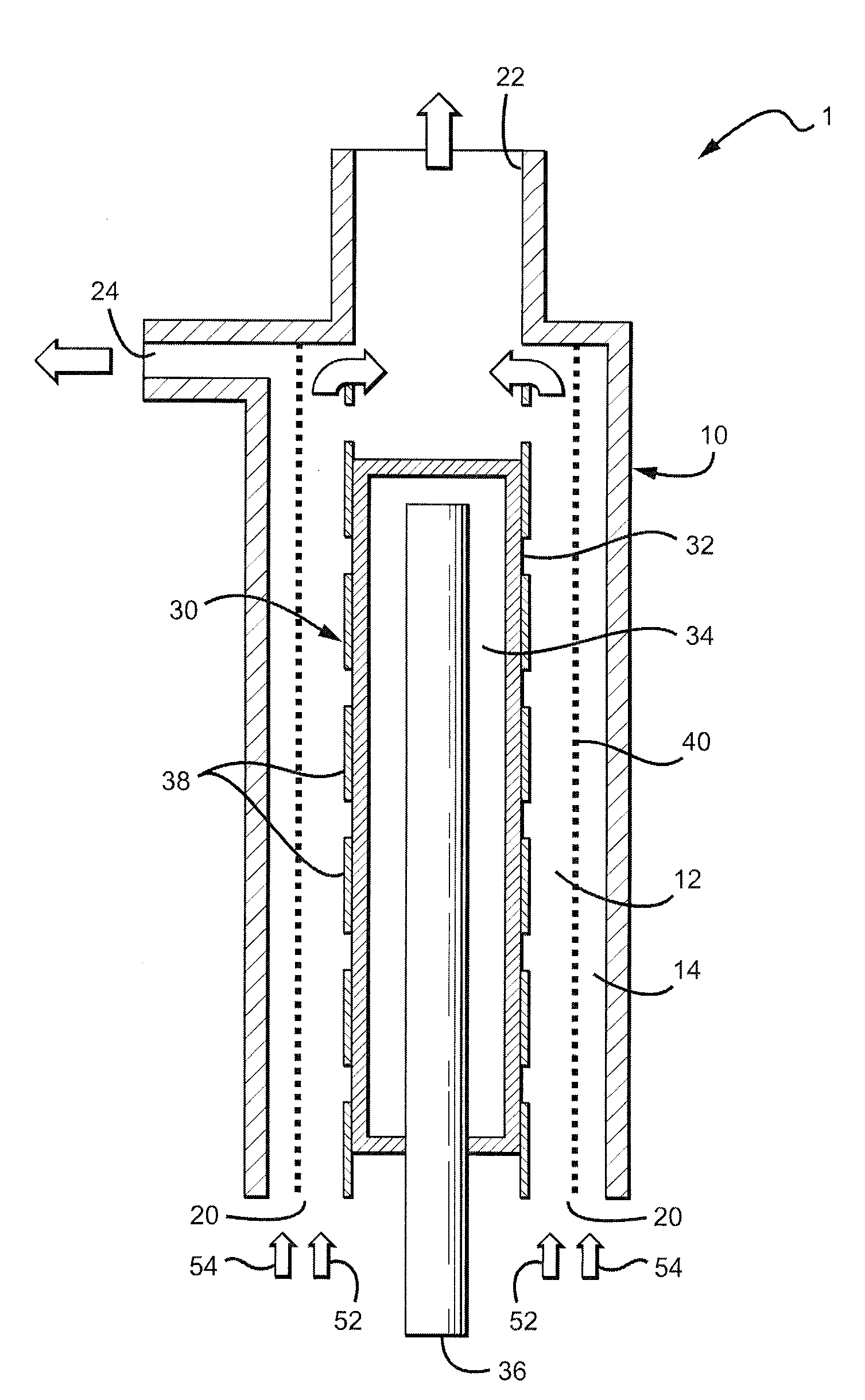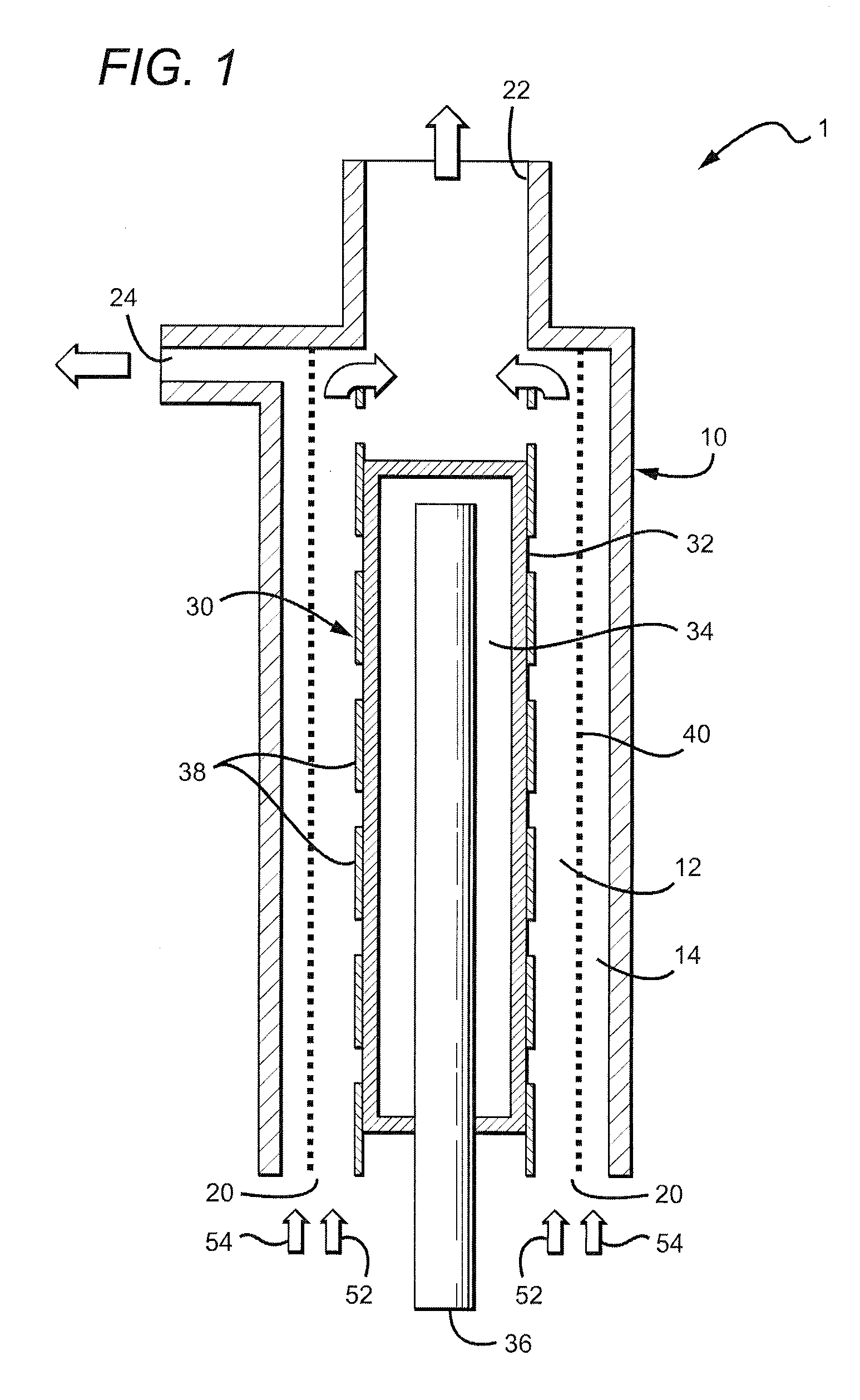Activated water apparatus and methods
a technology of activated water and apparatus, applied in the field of water treatment, can solve the problems of increasing the difficulty of water passing through the water chamber, so as to achieve the effect of low and higher flow ra
- Summary
- Abstract
- Description
- Claims
- Application Information
AI Technical Summary
Benefits of technology
Problems solved by technology
Method used
Image
Examples
Embodiment Construction
[0015]In FIG. 1 an activated water generator 1 generally includes a vessel 10 that has an inlet 20 and two outlets 22, 24, and that encloses a plasma generator 30. Plasmas are conductive assemblies of charged particles, neutrals and fields that exhibit collective effects. Plasma generator 30 is preferably a “cold” type plasma device, which term is used herein to mean a gas of ionized atoms cooler than 10,000° K. A membrane 40 disposed between the vessel 10 and the plasma generator 30 defines an inner space 12 and an outer space 14. With the plasma generator 30 in operation, a first stream 52 of water enters the vessel 10 at inlet 20, flows through inner space 12, and exits the vessel at outlet 22. A second stream 54 also enters the vessel 10 at inlet 20, but flows through outer space 14 and exits the vessel at outlet 24.
[0016]Vessel 10 can be any suitable size and shape, as long as water being treated is subjected to energy from the plasma under conditions that produce the desired c...
PUM
 Login to View More
Login to View More Abstract
Description
Claims
Application Information
 Login to View More
Login to View More - R&D
- Intellectual Property
- Life Sciences
- Materials
- Tech Scout
- Unparalleled Data Quality
- Higher Quality Content
- 60% Fewer Hallucinations
Browse by: Latest US Patents, China's latest patents, Technical Efficacy Thesaurus, Application Domain, Technology Topic, Popular Technical Reports.
© 2025 PatSnap. All rights reserved.Legal|Privacy policy|Modern Slavery Act Transparency Statement|Sitemap|About US| Contact US: help@patsnap.com


